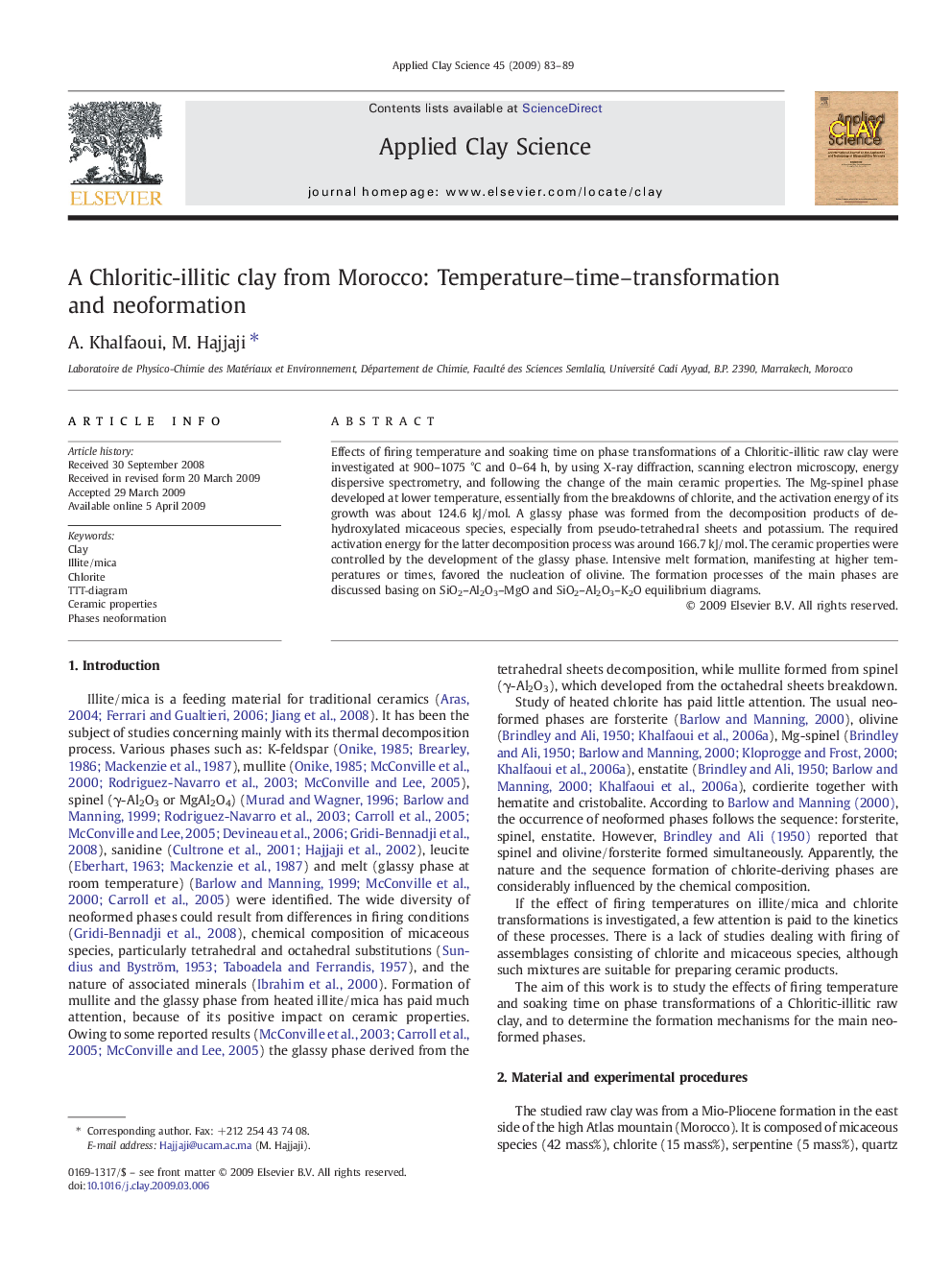| کد مقاله | کد نشریه | سال انتشار | مقاله انگلیسی | نسخه تمام متن |
|---|---|---|---|---|
| 1696024 | 1519120 | 2009 | 7 صفحه PDF | دانلود رایگان |

Effects of firing temperature and soaking time on phase transformations of a Chloritic-illitic raw clay were investigated at 900–1075 °C and 0–64 h, by using X-ray diffraction, scanning electron microscopy, energy dispersive spectrometry, and following the change of the main ceramic properties. The Mg-spinel phase developed at lower temperature, essentially from the breakdowns of chlorite, and the activation energy of its growth was about 124.6 kJ/mol. A glassy phase was formed from the decomposition products of dehydroxylated micaceous species, especially from pseudo-tetrahedral sheets and potassium. The required activation energy for the latter decomposition process was around 166.7 kJ/mol. The ceramic properties were controlled by the development of the glassy phase. Intensive melt formation, manifesting at higher temperatures or times, favored the nucleation of olivine. The formation processes of the main phases are discussed basing on SiO2–Al2O3–MgO and SiO2–Al2O3–K2O equilibrium diagrams.
Journal: Applied Clay Science - Volume 45, Issues 1–2, June 2009, Pages 83–89